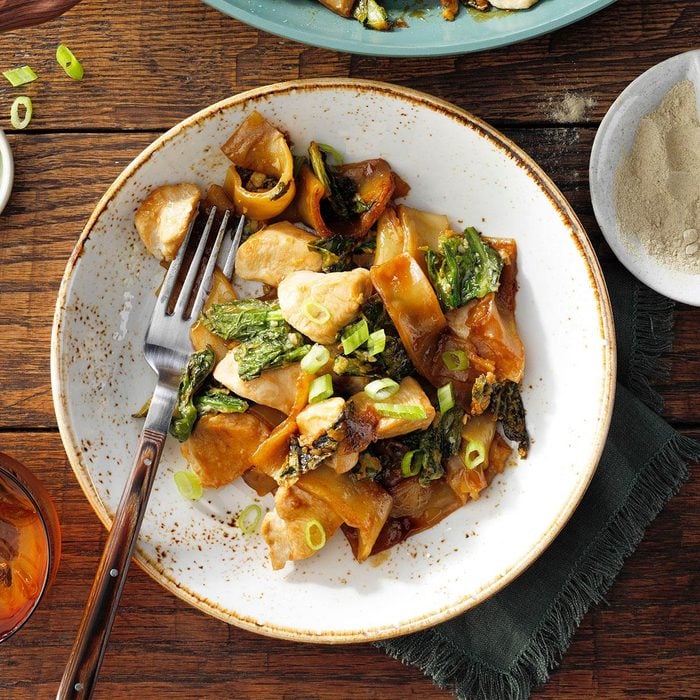Pad see ew is a popular stir-fried noodle dish from Thailand. Made quickly over a hot wok, wide rice noodles are cooked with fresh Chinese broccoli, egg, a protein (beef, chicken, shrimp or tofu), and a soy sauce-based sauce.
You’ll likely need to make a trip to your Asian supermarket to stock up on ingredients. Once your pantry is stocked, this dish can be ready in 20 minutes for a delicious takeout-style meal at home.
What is pad see ew?
Pad see ew directly translates to stir-fried soy sauce, so it’s easy to guess how the dish is made and which ingredient plays a large role in bringing the recipe together. While soy sauce might be a staple part of pad see ew, it’s certainly not the only thing that makes the dish stand out. Wide rice noodles, oyster sauce and Chinese broccoli are also key ingredients.
Pad See Ew vs. Pad Thai
While both are made with rice noodles, pad see ew uses wider noodles and has a charred and slightly sweet soy sauce flavor (the sweet flavors sets pad see ew apart from drunken noodles, which have a spicy profile). Pad Thai has a brighter and crunchier texture and is often made with peanuts, crisp vegetables like carrots and bean sprouts and flavored with tamarind and lime juice.
Both popular Thai recipes involve stir-frying noodles with vegetables, sauce and a scrambled egg, but the chewiness of the wide pad see ew noodles make it extra comforting.
Pad See Ew Ingredients
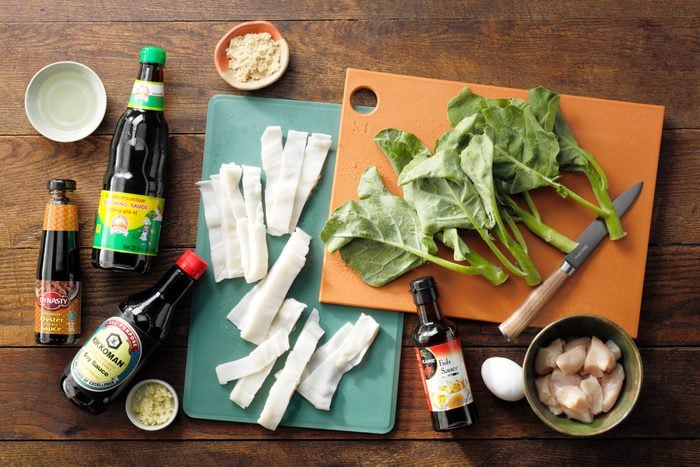
- Wide rice noodles: If you can find them in your local Asian grocery (or more specifically, a Thai grocery), opt for fresh wide rice noodles. They’ll be in the refrigerator section. The fresh noodles give this dish its chewy texture. If you can’t find fresh, dried works here too!
- Dark soy sauce: You’ve probably heard of and used regular soy sauce, but it’s the dark or black soy sauce that really makes pad see ew stand out. Slightly thicker and less salty than regular soy sauce, dark soy sauce provides a lovely brown color for the noodles and protein.
- Oyster sauce: Closer to a syrup than your average liquid, oyster sauce is another deep-hued condiment that gives the noodles and protein their coloring. Its thick consistency helps keep the stir-fry sauce together rather than slipping off the noodles.
- Chinese broccoli: Gai lan, otherwise known as Chinese broccoli, is not the same broccoli you’re used to seeing in grocery stores. The stems are long and thin with broad leaves that look more like spinach or kale.
Directions
Step 1: Make the sauce
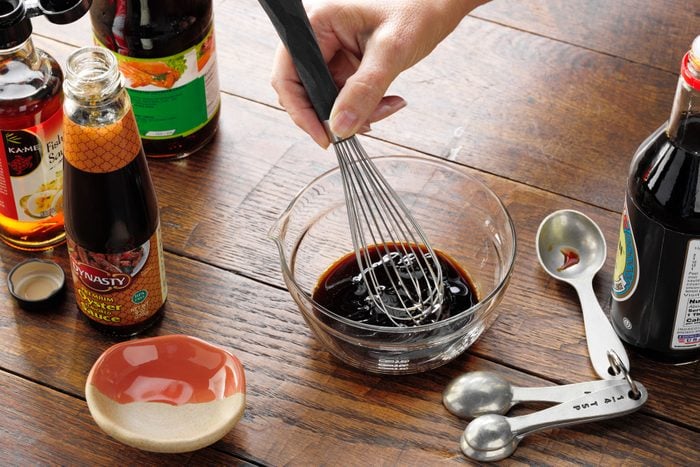
Mix sauce ingredients in a bowl and set aside.
Step 2: Prep your ingredients
Prepare vegetables by mincing garlic and chopping the Chinese broccoli at an angle into one-inch pieces.
Finally, open your package of rice noodles and carefully separate them to ensure they don’t clump together when stir-fried.
Step 3: Cook the protein
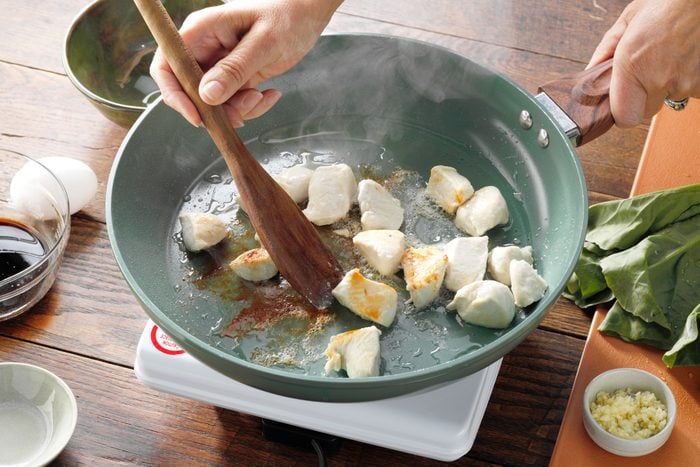
Heat a wok on high. Add a tablespoon of neutral oil and then the chicken. Stir occasionally until chicken is fully cooked, then place on a plate to rest while you cook the rest of the ingredients.
If there’s any residual juice or oil, clean that out before cooking the noodles and vegetables.
Step 4: Stir-fry the remaining ingredients
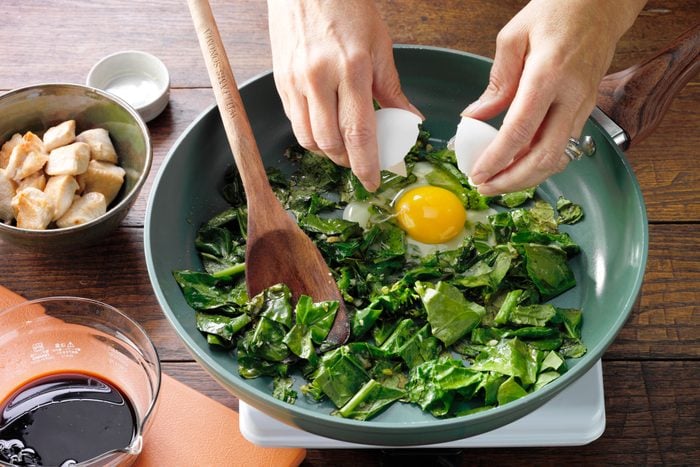
To the same wok, add a tablespoon of neutral oil and immediately add chopped garlic. Once the garlic begins to turn light brown, add the Chinese broccoli and let cook for 30 seconds, tossing constantly.
Carefully crack the egg into the pan and toss to scramble, about 15 seconds. As the egg begins to set, add the noodles and toss again before drizzling the sauce over everything.
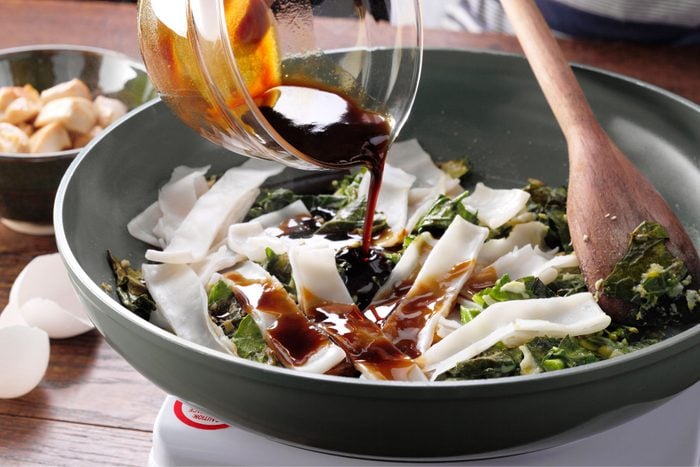
Continue stirring until the sauce is well incorporated, then let the ingredients sit 30 seconds without stirring to allow the noodles and vegetables to get that classic char. Toss again, letting it char another 30 seconds more so the noodles develop flavor. Turn the heat off once the noodles are cooked and vegetables are tender.
Serve the pad see ew with a small amount of white pepper, if desired.
How do you store pad see ew?
While we always love a good bowl of leftovers, pad see ew isn’t the best option for storing. Cooked rice noodles turn hard when they get cold. Their texture after reheating might not be as enjoyable as fresh. If you do end up with leftovers, store them in an airtight container in the fridge for a couple days and be sure to reheat thoroughly so that the noodles are very hot and soften up a bit. We don’t recommend freezing pad see ew.
Pad See Ew Tips
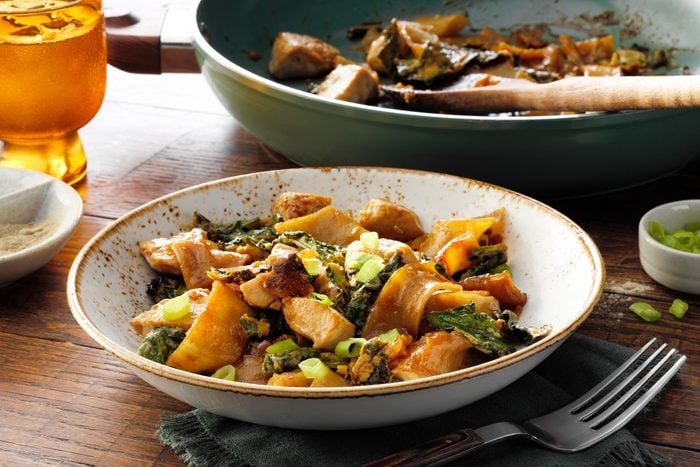
What other proteins can you put in pad see ew?
While chicken is a classic protein for pad see ew, you can absolutely experiment with any of your favorite proteins. Try six to eight uncooked, peeled medium shrimp; a 4-ounce, uncooked flank steak, cut into 2-inch strips; or 1/3-block of firm tofu, cut into 1-inch cubes.
What noodles are best for pad see ew?
To keep this dish authentic, wide rice noodles are the best option. Be sure your fresh rice noodles are at room temperature before you begin. If they’re stiff from being in the fridge, rinse them under hot tap water or microwave for 30 seconds right before you stir-fry the dish.




















